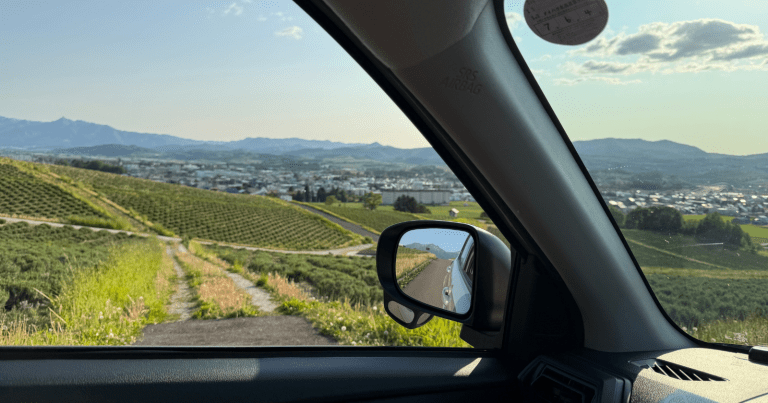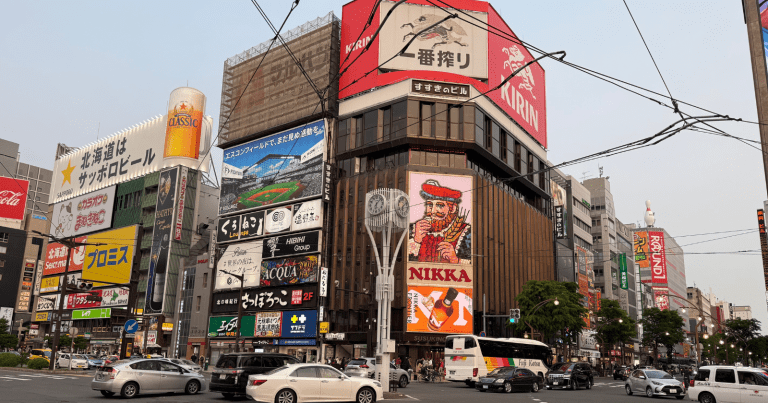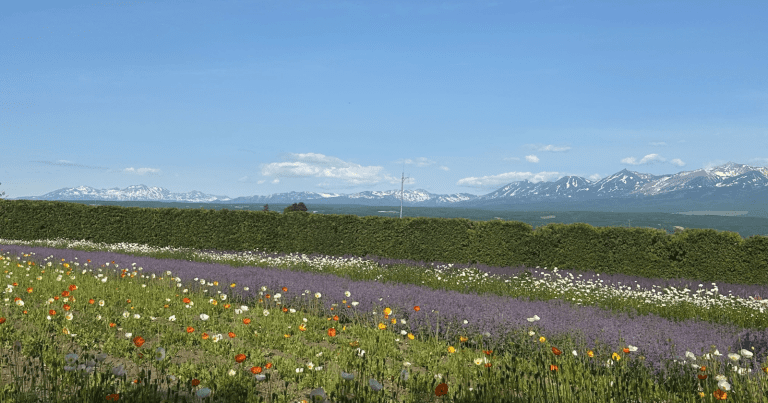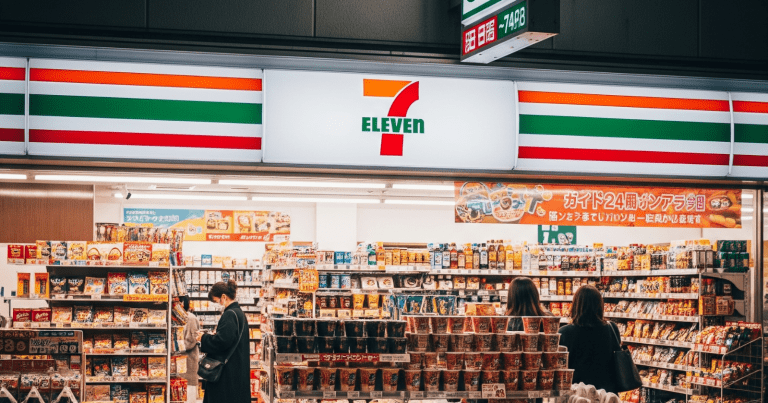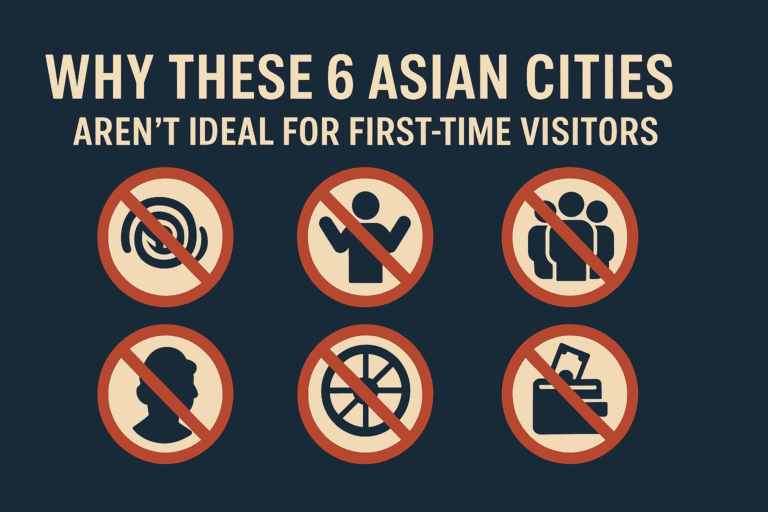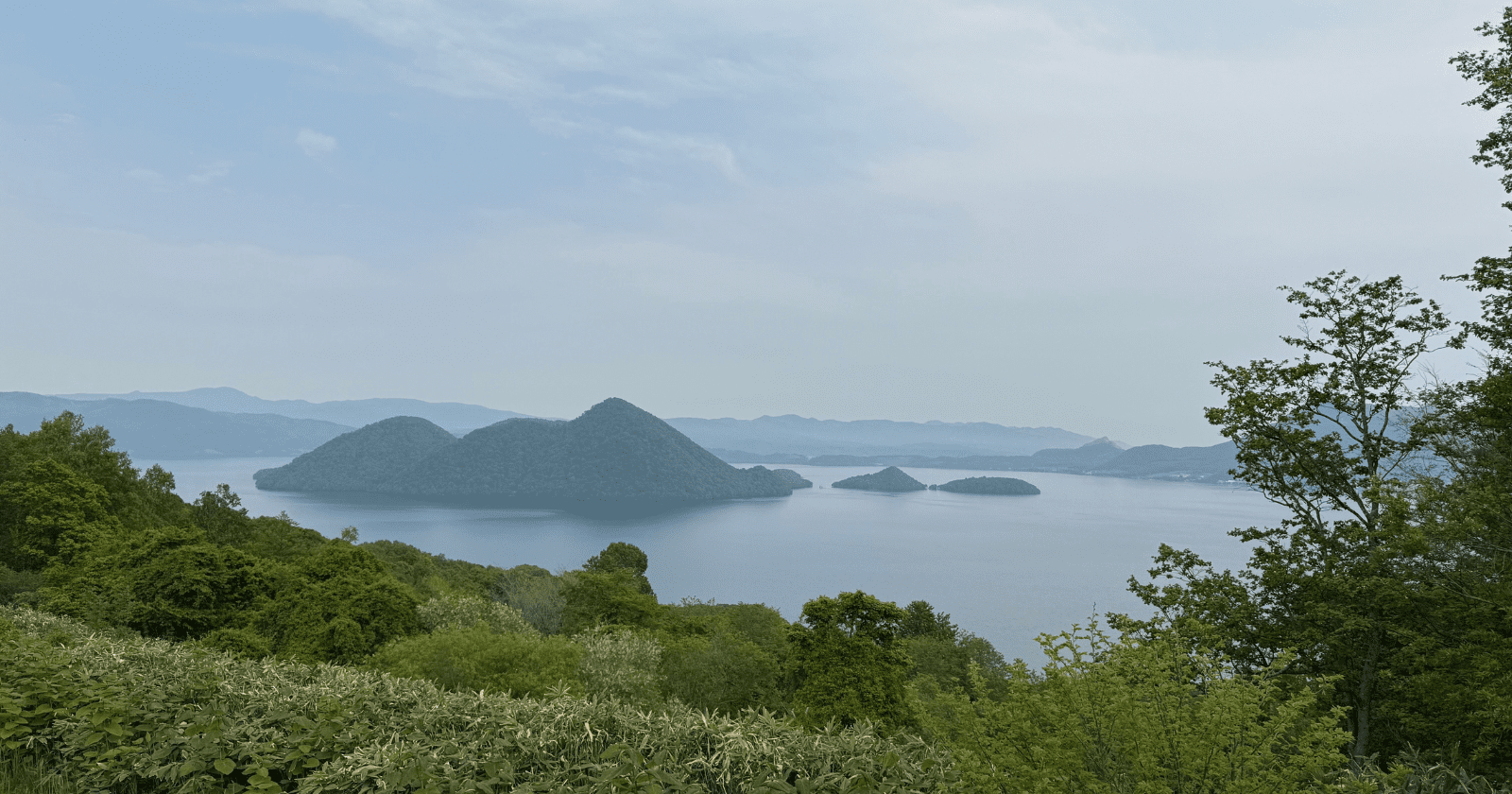
As a travel planner focused on making every trip to Asia smarter, more affordable, and deeply rewarding, I often find that the most valuable lessons aren’t learned from meticulously pre-planned itineraries, but from the unexpected detours. You know the ones – those moments when you see something on the map, feel a pull, and decide to just go.
Our recent trip in Hokkaido offered one such perfect example: an unplanned stop that led to a single night near Lake Toya. And let me tell you, discovering the secret of a Lake Toya volcanic onsen experience, even just for one night, was absolutely worth the detour. This wasn’t on the original plan, but it turned out to be a masterclass in how to pivot like a savvy traveler and unlock unique value.
We had just picked up a rental car in Sapporo, ready to head towards Furano, but wanted to take the scenic route via the view of Mount Yotei. Looking at the map on the drive, Lake Toya just… appeared. We knew nothing about it, hadn’t researched it at all, but saw the distinctive shape and decided on the spot to make a significant detour. This wasn’t reckless abandon; it was strategic flexibility. We had the time, the transport, and the inclination. This is your first lesson: being open to the unplanned can be a savvy move, provided you have buffer in your schedule and aren’t sacrificing a non-negotiable booking.
Turning Detours into Savvy Wins: Roadside Revelations
The drive itself became part of the unexpected reward. About an hour and a half into our detour, hunger struck. Instead of looking for a known chain or getting sucked into a tourist trap, we spotted a humble roadside ramen place.
Pulling over was a gut feeling – and it paid off immensely. The ramen was incredibly good, clearly made with care, and cost a fraction of what we might have paid in a more built-up area. This teaches you a core savvy travel principle: trust local instincts and roadside stops. Often, the best, most affordable food is found where the locals are eating, right off the beaten path. Look for simple signs, a few parked cars (especially trucks – truckers know good, fast, cheap food), and places that don’t necessarily cater heavily to English speakers. A simple point-and-order strategy with a smile usually works wonders.
 Further down the road towards where we hoped to get a better look at Mount Yotei, we pulled over onto a quiet farmer’s street. There it was, majestic and framed perfectly by fields. We stopped, took photos, breathed the fresh air. It was just a few minutes, but deeply satisfying. This wasn’t a designated viewpoint on a map; it was just using our eyes and recognizing an opportunity for a beautiful, free experience. Savvy travel is about maximizing value beyond just monetary savings – it’s about maximizing memorable moments too.
Further down the road towards where we hoped to get a better look at Mount Yotei, we pulled over onto a quiet farmer’s street. There it was, majestic and framed perfectly by fields. We stopped, took photos, breathed the fresh air. It was just a few minutes, but deeply satisfying. This wasn’t a designated viewpoint on a map; it was just using our eyes and recognizing an opportunity for a beautiful, free experience. Savvy travel is about maximizing value beyond just monetary savings – it’s about maximizing memorable moments too.
Our next stop was a tourist-oriented place, which might seem counter-intuitive to budget travel, but even these can offer savvy benefits. This one had souvenir shops and, critically, a cafe. And not just any coffee – one using Hokkaido milk. The iced coffee latte I had there was fantastic, genuinely one of the best. The lesson?
Even in tourist spots, there are often specific local products worth seeking out. Hokkaido milk has a reputation, and this cafe capitalized on it. Take a moment to identify what a region is known for and sample it, even if it’s at a slightly more expensive spot. It’s a small splurge that enhances your understanding and enjoyment of the local culture and produce.
From this stop, we also got our first proper view of Lake Toya itself, with its distinctive island in the middle. It was indeed fantastic, immediately justifying the detour in our minds before we even reached our accommodation.
The Secret Sauce: Accommodation, Onsen, and Unexpected Delights
Finding accommodation last-minute on a detour can be a challenge, but it also opens doors to unique stays you wouldn’t find in standard guides. We ended up in a trailer accommodation. Now, “trailer” might sound basic, but this was huge! It felt more like a spacious, standalone cabin with a living room, and the convenience of parking our rental car right next to it was a major plus. It was only a few minutes’ walk from the lake in a really sweet, quiet neighborhood.
This is another savvy tip: be open to unconventional accommodation types. Look beyond hotels and guesthouses for options like cabins, specific types of local inns (like minshuku in Japan), or even unique stays found on platforms catering to different types of travel. They can offer more space, better value, unique locations, or convenient amenities like parking that are perfect for road trips.
The true “secret” of this single night, and the reason it resonated so deeply, was the connection to the volcanic activity that defines the region and powers the onsens. While our specific trailer accommodation didn’t have a dedicated onsen bath within the unit, its location placed us perfectly to experience the benefits of this volcanic area. Many accommodations around Lake Toya, from budget guesthouses to larger hotels, tap into the natural hot springs. The savvy move here, especially for a short stay, is to prioritize access to the volcanic onsen experience. Look for places that offer a communal onsen bath, or if your budget allows, a room with an attached onsen tub. Even a quick dip in mineral-rich volcanic water after a day of driving and exploring is incredibly restorative and deeply embedded in Japanese culture.
Our spontaneous detour to Lake Toya felt exactly like that – taking the reins of our trip to discover something unexpected and uniquely rewarding.
The neighborhood around the lake was quiet and pleasant, featuring a single but huge 7/11 (a lifeline for travelers in Japan!), and places offering water activities like swan boats and kayaks. This highlights the value of staying in a less tourist-dense residential area near a major attraction – you get the peace and quiet, access to local conveniences (like the 7/11, which is great for affordable meals and snacks), and still have easy access to the main draws.
And then came the evening’s unexpected highlight, a truly unique offering of Lake Toya that makes a single night’s stay incredibly rewarding: the nightly fireworks display. From April to October, a 20-minute fireworks show is put on every single night over the lake. We didn’t know this beforehand, but walking by the lake shore after sunset, we saw people gathering. This spontaneous discovery added immense value to our short visit. Savvy travelers pay attention to local rhythms and events. A quick search for “Lake Toya events tonight” or checking local tourism boards (even via Google Translate) can uncover such gems that turn a simple overnight into a magical experience.
We just grabbed some food from the 7/11 and found a spot by the lake – an incredibly simple, affordable, and perfect dinner combined with a spectacular show.
Reflecting on that single night, it was a blend of spontaneous discovery, practical travel choices, and embracing local culture (the onsen possibility, the 7/11 convenience, the community feel of the fireworks). We left the next day for Furano, wishing we could have stayed just one more night to soak in the atmosphere and perhaps try another local onsen. It wasn’t just the destination; it was the experience built from making savvy choices on the fly.
Advanced Savvy for Unexpected Stops & Onsen Stays
Making unplanned detours work requires a few advanced techniques. First, always have some buffer time in your itinerary. Our Hokkaido road trip allowed for flexibility between Sapporo and Furano, making the Lake Toya stop feasible without derailing everything. Second, connectivity is key. Even for a spontaneous turn-off, being able to quickly check maps, potential accommodations, or local information online is crucial. Having a reliable eSIM or local SIM card is invaluable for this kind of flexible travel.
When it comes to leveraging the onsen aspect of a volcanic region like Lake Toya on a short stay, understand the options. Many hotels offer day-use onsen passes even if you aren’t staying the night. This is a great way to experience the volcanic waters without the cost of a full hotel stay. Research public onsen facilities in the area – these are often the most authentic and budget-friendly, though etiquette is important (cleanliness, no swimsuits, understanding gender-separated baths). Carrying a small, quick-dry towel is a savvy move if you plan to visit public onsens.
Also, be aware of the seasonal nature of some attractions. Knowing the Lake Toya fireworks only happen from April to October is crucial information a savvy traveler would try to uncover quickly after deciding on the detour. This kind of quick research maximizes the value of your limited time.
Traveling savvily isn’t just about reading the main chapters; it’s about daring to flip to an unread page, like the one we found at Lake Toya.
Niche Tips for Unconventional Finds
How do you even find places like that great roadside ramen or a unique trailer accommodation? For food, look for signage that appears locally made rather than corporate, or places with simple menus written only in Japanese (Google Translate’s camera function is your friend here). For accommodation, explore different booking platforms and use map view extensively to see what’s available in specific areas you want to be near (like the lake shore), not just in the town center. Sometimes, filtering by “unique stays” or property type can reveal options beyond standard hotels. Looking at the specific type of location can also help – our trailer was likely part of a small complex catering to campers or long-term stays, offering a different vibe entirely.
For finding local events like fireworks, check the official town or regional tourism websites. They might be only in Japanese, but again, translation tools can help. Look for sections labeled “イベント” (events) or “観光情報” (tourism information). Forums dedicated to travel in Japan can also yield valuable tips about hyper-local happenings you won’t find in major guides. For example, finding information on specific street eats or small festivals often requires digging into these community resources.
My savvy traveler anecdote from this trip is simple but impactful: As we were driving, considering the Lake Toya detour, there was a moment of hesitation. It wasn’t on the plan, it added driving time, and we weren’t sure what we’d find. My instinct (honed by years of travel planning) said, “Go for it. What’s the worst that happens? You lose a couple of hours? What’s the best? You discover something amazing.” We went for it, and the best absolutely happened – the views, the food, the unique stay, the onsen opportunity, the fireworks. The mistake would have been sticking rigidly to the original plan just because it was the plan, missing out on a deeply enriching experience that a bit of flexibility and savvy exploration unlocked. This applies whether you’re exploring the islands of Southeast Asia or taking a road trip in Japan.
This type of spontaneous, yet still savvy, travel is incredibly rewarding. It requires you to be adaptable, resourceful, and observant. It teaches you that some of the most valuable travel experiences come from embracing the unexpected and being prepared to make the most of it.
The Lake Toya detour, initially just a curious point on the map, became a highlight precisely because we approached it like savvy travelers: open to spontaneity, observant of local opportunities (food, views, events, unique stays, volcanic onsen access), and willing to make the most of the single night. It wasn’t about seeing everything Lake Toya had to offer; it was about extracting maximum value and unique experiences from the limited time we had there.
Conclusion: The Power of a Savvy Detour
Our single night near Lake Toya, Japan, unplanned and brief, proved that the savvy traveler can find immense value even in a short, unexpected stop. By being open to detours, recognizing opportunities at roadside stops, embracing unique accommodation, looking for local phenomena like nightly fireworks, and prioritizing experiences like a volcanic onsen bath, you can turn a simple drive into a memorable adventure.
Remember, savvy travel is about flexibility, resourcefulness, and making informed decisions even when they’re spontaneous. That one night gave us great food, stunning views, a comfortable and unique place to stay, magical fireworks, and access to the area’s famous volcanic waters – far more than we could have planned for. So next time you see that intriguing spot on the map, trust your savvy instincts and take the detour. It just might lead you to your own Lake Toya secret.


